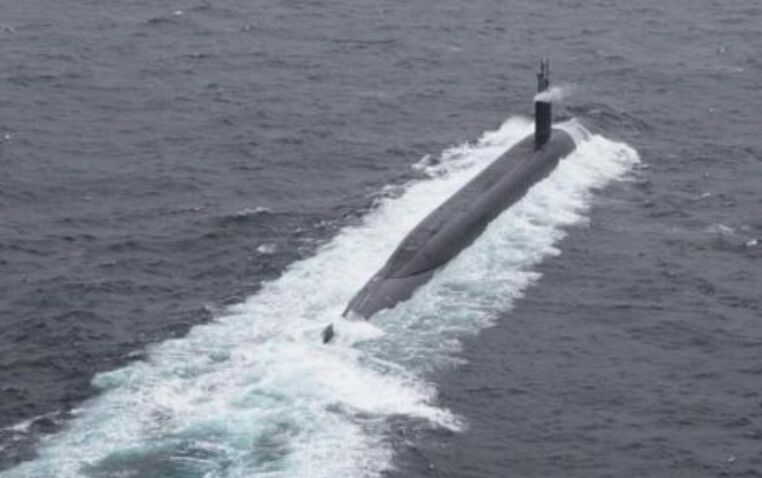United States Deploys Nuclear-Armed Submarine to South Korea in Response to North Korea's Escalating Nuclear Threat
U.S. Deploys Nuclear-Armed Submarine to South Korea in Response to North Korea's Nuclear Threat" The United States sends the USS Kentucky, a nuclear-armed submarine, to South Korea for the first time in 40 years to counter North Korea's escalating nuclear ambitions.
In a significant move, the United States has deployed a nuclear-armed submarine to South Korea for the first time in four decades. The USS Kentucky, an Ohio-class submarine, arrived at the port of Busan on Tuesday, marking the first visit by a U.S. nuclear-armed submarine to South Korea since the 1980s.
This deployment comes as a response to North Korea's expanding nuclear threat and is part of the agreements reached between the two countries' presidents in April.
The periodic visits by U.S. nuclear ballistic missile-capable submarines to South Korea were agreed upon to address the increasing nuclear threat posed by North Korea.
Additionally, the two countries established a bilateral Nuclear Consultative Group and agreed to expand military exercises. The deployment of the USS Kentucky demonstrates the United States' commitment to its "extended deterrence commitment," which involves using its full military capabilities, including nuclear weapons, to protect its allies.
This visit by the U.S. submarine serves as a demonstration of the allies' overwhelming capability and posture against North Korea. During the late 1970s, U.S. nuclear-armed ballistic missile submarines frequently visited South Korea, with the U.S. having hundreds of nuclear warheads located in the country.
However, in 1991, the United States withdrew all of its nuclear weapons from the Korean Peninsula. North Korea's nuclear ambitions have been a cause for concern, particularly after the country threatened to use nuclear weapons in conflicts and conducted numerous missile tests.
Last week, North Korea conducted a test of a more mobile and powerful intercontinental ballistic missile designed to strike the mainland United States. North Korean leader Kim Jong Un has vowed to further strengthen his country's nuclear combat capabilities.
In addition to the submarine deployment, South Korean and U.S. officials held the inaugural meeting of the Nuclear Consultative Group in Seoul. The group aims to discuss ways to strengthen deterrence against North Korea's nuclear threats.
Both countries issued a joint statement stating that any nuclear attack by North Korea against the United States or its allies is unacceptable and would result in the end of the regime.
The establishment of the consultative body is crucial in sharing information on nuclear and strategic weapons operation plans and joint operations.
While the U.S. retains operational control of its nuclear weapons, the group's formation and other measures announced in April aim to address South Korean concerns about North Korean provocations without pursuing its own nuclear program.
The launch of the consultative group is seen as a significant step towards establishing a powerful and effective extended deterrence between South Korea and the United States.
However, North Korea condemned the agreements between President Joe Biden and South Korean President Yoon Suk-yeol in April, viewing them as extreme hostility.
In response, Kim Yo Jong, Kim Jong Un's powerful sister and senior adviser, warned that North Korea is ready to counteract any acts that violate its sovereignty and territorial integrity.
The deployment of the nuclear-armed submarine and the establishment of the Nuclear Consultative Group signify the United States' and South Korea's commitment to addressing the growing nuclear threat from North Korea.
These measures aim to strengthen deterrence and protect the security of the region and its allies, while maintaining diplomatic efforts to resolve the situation peacefully.




